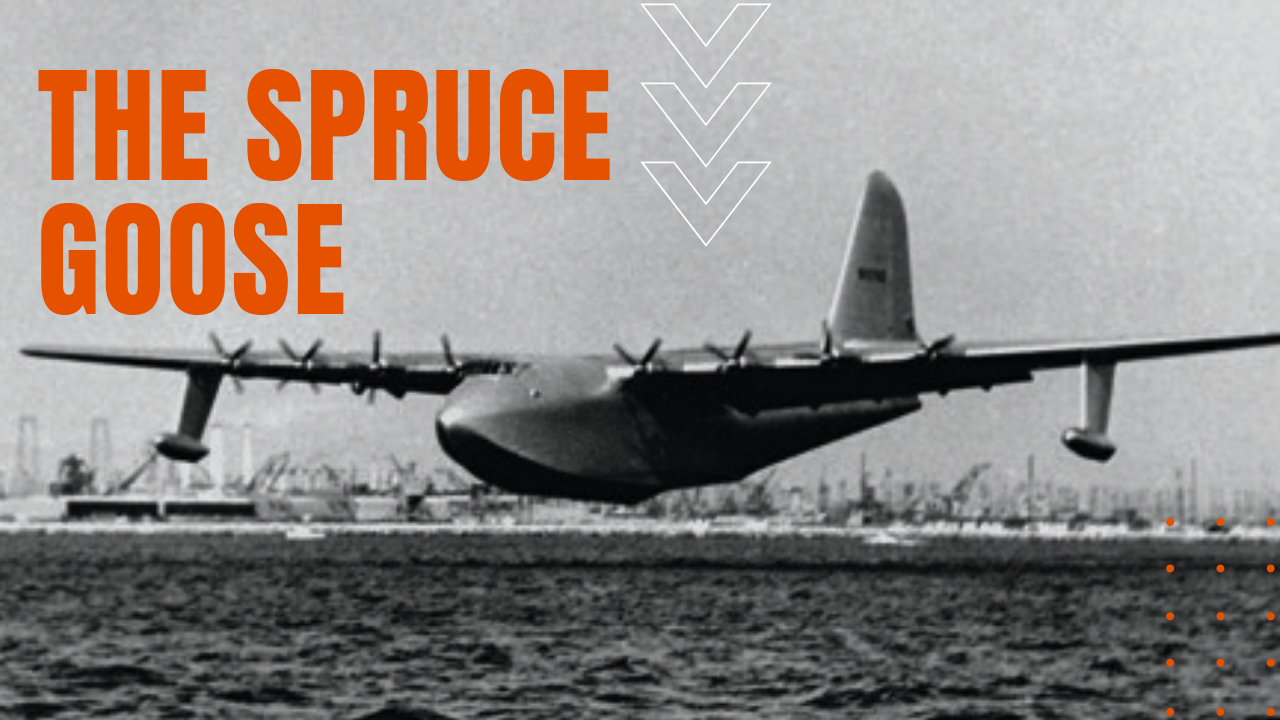The Expensive Flight of the Spruce Goose

During World War Two, German U-boats wreaked havoc on Allied convoys, as they ferried men and war materiel into the battlegrounds of Europe. As a result of these heavy losses, the U.S. government signed a contract with Hughs Aircraft Company to build a massive floatplane that could carry 750 troops or two 30 ton M4 Sherman tanks over the Atlantic.
Howard Hughes
The man contracted by the U.S. Department of Defense to design and build the H-4 Hercules was a larger-than-life figure named Howard Hughes, who was a pilot, plane maker and film producer.
While the contract was signed in November of 1942, construction wouldn’t even begin until 1944, almost a full year after the U-boat threat had been largely eradicated and the plane no longer needed.
Built entirely of wood due to wartime shortages of aluminum, Washington finally had enough and canceled the project, but Hughes’ vigorous lobbying campaign reached an agreement with lawmakers that one airplane could be completed.
Two years later, parts of the massive plane were moved to an assembly site near Long Beach Harbor, where more delays in final assembly caused more rumblings in Washington. After the construction project had swallowed vast sums of public money—nearly $350 million in today’s currency—Hughes was summoned to a Senate committee investigating the project. Its chairman, Senator Owen Brewster, was on the warpath against Hughes.
The Spruce Goose’s Maiden Flight and Ultimate Fate
On November the 1st, 1947, the Spruce Goose or the Flying Lumberyard, as critics nicknamed the behemoth, conducted taxiing trials with approximately 40 reporters and engineers aboard.
After several faster and faster taxi runs, with Hughes in the pilot’s seat, he unexpectedly called for 15 degrees flaps down, throttling up the eight-engine plane for its only time aloft. The Spruce Goose never flew again, but it remains to this day the biggest aircraft ever built.
At Hughes’ insistence, the plane was stored in a specially-built, climate-controlled hangar, entombed in mystery for the next 32 years, at an annual cost of $1 million. After Hughes passed away in 1976, the plane was put on display in Long Beach Harbor next to the Queen Mary, until she was moved to McMinnville, Oregon in 1993, where she resides at the Evergreen Aviation & Space Museum.
